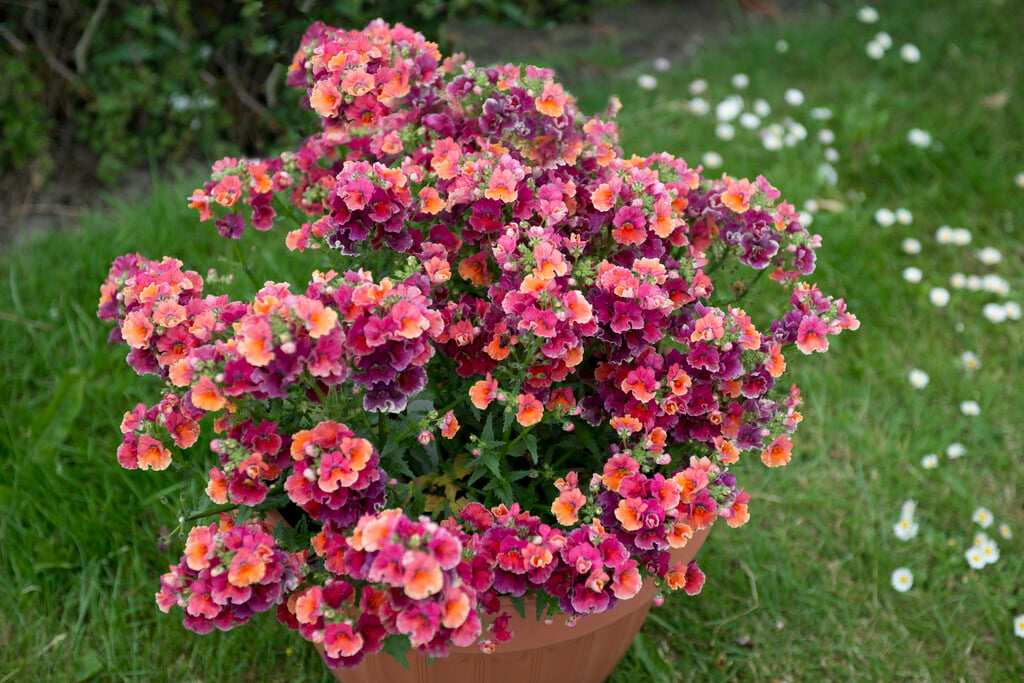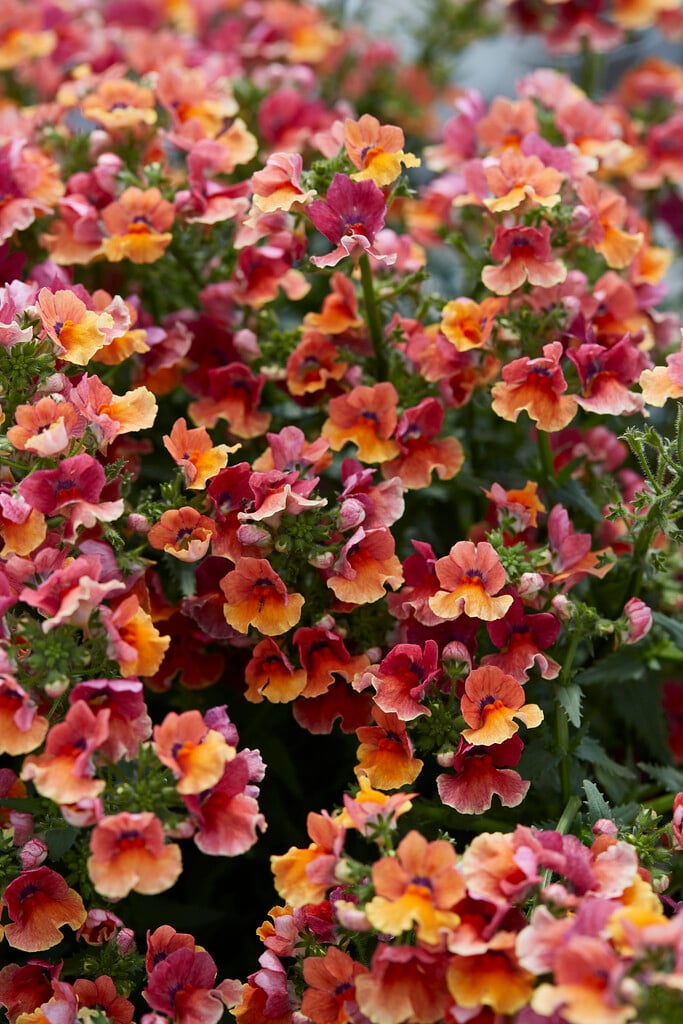Nemesia Nesia Tropical (Nesia Series)
nemesia [Nesia Tropical]
A robust and compact, bushy, half-hardy perennial. Has small lance-shaped, toothed dark green leaves and terminal racemes of scented two-lipped tubular flowers from late spring to early autumn. Upper petals have a blend of pinky-red tones with a small purple blotch towards the orange centre and the lower petals are orange with a hint of pink.
Size
Ultimate height
0.1–0.5 metresTime to ultimate height
1–2 yearsUltimate spread
0.1–0.5 metresGrowing conditions
Moisture
Well–drained, Moist but well–drainedpH
Neutral, AcidColour & scent
| Stem | Flower | Foliage | Fruit | |
| Spring | Green | |||
|---|---|---|---|---|
| Summer | Orange Red | Green | ||
| Autumn | Orange Red | Green | ||
| Winter |
Position
- Full sun
- Partial shade
Aspect
West–facing or South–facing or East–facing
Exposure
Sheltered Hardiness
H3Botanical details
- Family
- Scrophulariaceae
- Native to GB / Ireland
- No
- Foliage
- Deciduous
- Habit
- Bushy
- Genus
Nemesia can be annuals, perennials or sub-shrubs of bushy habit, with simple, opposite leaves and 2-lipped flowers in short racemes or solitary in the leaf axils
- Name status
Trade
How to grow
Cultivation
Will grow well in moist but well-drained, fertile, slightly acidic soil in full sun. Partial afternoon shade will make flowers last longer. If growing in containers add one application of slow release fertilizer to encourage steadier performance. Overwinter in a greenhouse or in a frost free environment
Propagation
Propagate by seed and softwood cuttings in spring or late summer
Suggested planting locations and garden types
- City and courtyard gardens
- Cottage and informal garden
- hanging basket
- Patio and container plants
- Low Maintenance
- Bedding
- Conservatory and greenhouse
- Flower borders and beds
Pruning
Pinch out growing tips to produce a bushier plant. Cut back in summer for a second flush of flowering, alternatively trim off spent flowers to promote continuous flowering
Pests
Generally pest-free but may be susceptible to aphids
Diseases
Generally disease-free but may be susceptible to root and foot rot in very wet conditions
Love gardening
Sign up to receive regular gardening tips, inspiration, offers and more
View our Privacy Policy
Get involved
The Royal Horticultural Society is the UK’s leading gardening charity. We aim to enrich everyone’s life through plants, and make the UK a greener and more beautiful place.

